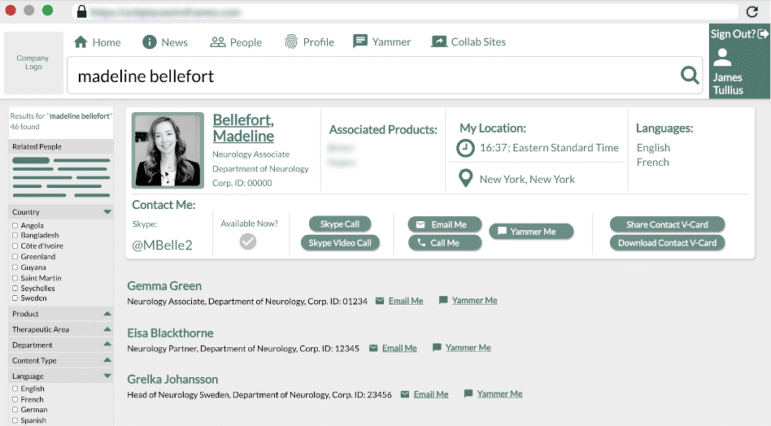
The Challenge
At a global biopharmaceutical company, the global analytics and marketing departments generated a great amount of data and content and experienced a high reuse rate of one another’s content. As a result, information was consistently “lost” or underutilized because it was generated quickly and in large quantities. There were then challenges with consistent rework and time lost from regenerating or trying to locate otherwise pre-existing institutional knowledge and data. Consequently, leadership recognized that because all data and information were not being maximized by the organization, they ran the risk of potential profit and research development loss. With the goal of streamlining cross-departmental content collaboration and data management as well as enhancing findability, the organization needed to put foundational infrastructure in place to adequately prepare for their global Artificial Intelligence (AI) initiatives.

The Solution
Alongside Enterprise Knowledge (EK), the organization embarked on a phased approach to develop a scalable knowledge, data, and information management strategy. EK began by designing a global content and data strategy in parallel with an enterprise search redesign effort that featured an information architecture overhaul. A taxonomy and corresponding content types were designed to support auto-tagging and the automated organization of unstructured content, while also allowing for the transformation of the organization’s content into a machine-readable format.

The second half of the approach included identifying scaled integration points across the organization’s content, allowing for advanced inter-content relationships to be utilized by recommendation engines in the future. Ontologies and knowledge graphs were introduced as a means of automating the application of these relationships while also optimizing the use and reuse of the organization’s data and information. To further support the management and scalability of the strategy and design efforts over time, an organizational model and governance plan were developed to support change management, implementation, and adoption.

The EK Difference
Because this large, global organization was seeking to successfully complete an initiative that traversed multiple departments, the effort required alignment and support from department leads, staff, and executives. EK leveraged our proven facilitation and prioritization approaches tailored specifically to information and data management strategy and led strategic discussions with the company’s executives, global program leadership, and staff to align on the “as-is” and “to-be” states of the effort. We developed relevant business impact and ROI measures by identifying prioritized success and performance factors that were evaluated and adjusted consistently throughout the effort.
EK further leveraged our expertise in ontology and enterprise knowledge graphs to design an information architecture that defined the relationships across disparate content and built the foundation for advanced capabilities, such as automated tagging, content governance, natural language search, data analytics, and future AI and Machine Learning (ML) capabilities.

The Results
The knowledge and information management program allowed the organization to better understand and capitalize on their market insights and, as a result, discover and utilize otherwise inaccessible data. Connections between knowledge assets are now defined and the information architecture and content strategy benefit from a taxonomy and metadata design that account for both structured and unstructured data.
EK also revamped the company’s internal search experience by redesigning indexing processes and leading Design Thinking sessions to inform both UI and UX search design decisions, ultimately integrating action-oriented results across the intranet. Consequently, users found that returned results were more relevant to their queries and a user-friendly interface personalized for the organization’s staff facilitated system access and ease-of-use.
The KM organizational structure will ensure that stakeholders are enabled to make informed investment decisions about their data and content management systems and will better understand the relationships required to bring them all together. As AI capabilities become more advanced and accessible on a global scale, the organization will not only be operating ahead of the curve, but will be able to adapt and apply these capabilities on a regular basis.
